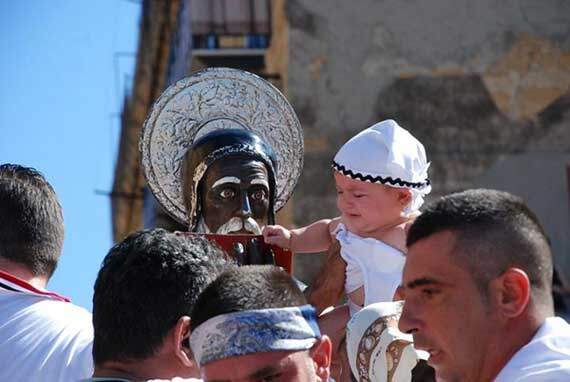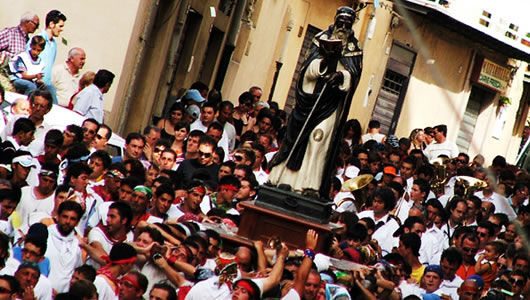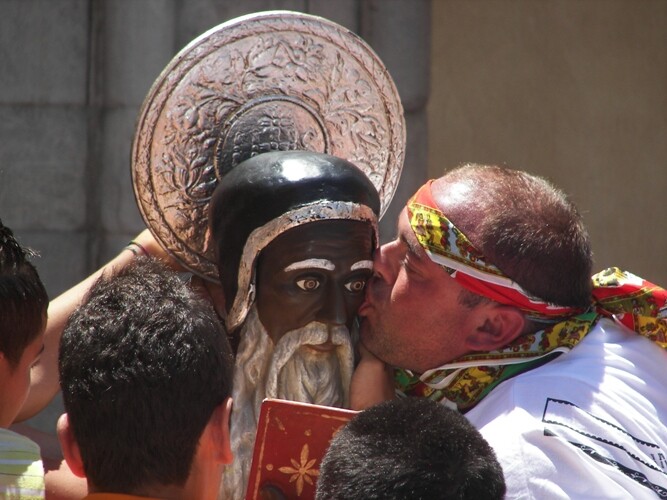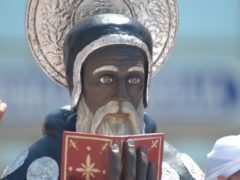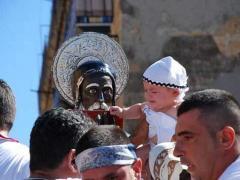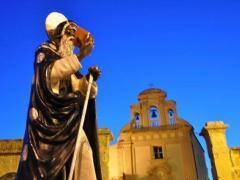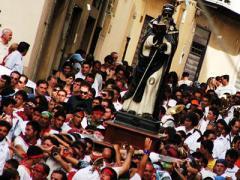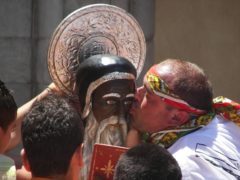Feast of San Calogero - Agrigento
Property included in the Register of Intangible Heritage of Sicily (REIS)
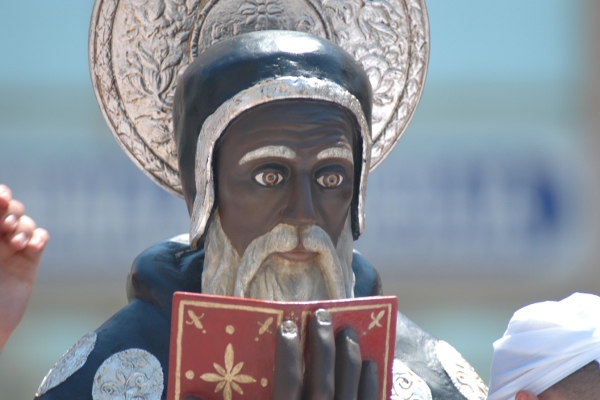
The patron saint of Agrigento is San Gerlando but the celebrations that are paid to San Calogero are probably unparalleled in any other corner of the world.
During the eight days (from the first to the second Sunday of July) of celebration, mysticism, ancient traditions, legends and deep Christian faith intersect and unleash an energy that is difficult to translate into simple words.
It is said, in fact, that the monk Calogero, who came to Sicily to evangelize and spread the Christian faith, during a long period of pestilence went around asking for bread to give to the poor. The people, holed up in the house for fear of the plague, would throw bread from the windows as the monk passed by to prevent Calogero from getting too close to their homes. To testify to the profound faith in the saint linked to ancient traditions, it is enough to see the manifestations that he puts into being, who has received a grace.
The "Black Saint" is certainly the most loved by the people of Agrigento who still today, after hundreds of years, continue to throw loaves of bread as the very heavy fercolo passes in procession, as tradition dictates. The over one hundred devout bearers flock under the statue to accompany him on his long crossing of the most inaccessible streets of the historic center and at each stop the faithful go up to embrace and kiss the saint, "drying" his sweat with white handkerchiefs, praying and invoking thanks .
Even today, in fact, one can witness barefoot journeys from one's home to the Sanctuary dedicated to him, the graphic representations of illnesses and misfortunes, the white “little dresses” made to wear by children. During the celebration period, cultural events are usually also organized.
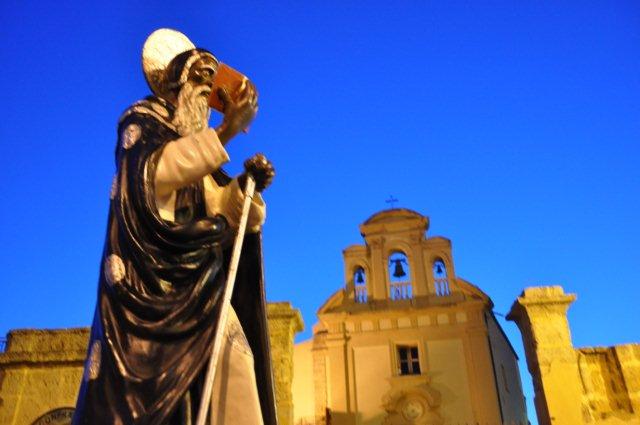
Text source: Municipality of Agrigento
Visit Sicilian Intangible Cultural Heritage database to learn about other intangible assets
Visit Data Maps Heritage: Set of databases of the Sicilian Cultural Heritage to know other databases (nature, baroque, archeology, material assets and much more)
----------------
Technical sheet prepared by: Region of Sicily - Department of cultural heritage and Sicilian identity - CRicd: Regional center for inventory, cataloging and documentation and Sicilian regional film library
Intangible Heritage Register



